Giorgos Karvounas
Multi-view Image-based Hand Geometry Refinement using Differentiable Monte Carlo Ray Tracing
Jul 12, 2021



Abstract:The amount and quality of datasets and tools available in the research field of hand pose and shape estimation act as evidence to the significant progress that has been made. We find that there is still room for improvement in both fronts, and even beyond. Even the datasets of the highest quality, reported to date, have shortcomings in annotation. There are tools in the literature that can assist in that direction and yet they have not been considered, so far. To demonstrate how these gaps can be bridged, we employ such a publicly available, multi-camera dataset of hands (InterHand2.6M), and perform effective image-based refinement to improve on the imperfect ground truth annotations, yielding a better dataset. The image-based refinement is achieved through raytracing, a method that has not been employed so far to relevant problems and is hereby shown to be superior to the approximative alternatives that have been employed in the past. To tackle the lack of reliable ground truth, we resort to realistic synthetic data, to show that the improvement we induce is indeed significant, qualitatively, and quantitatively, too.
H-GAN: the power of GANs in your Hands
Apr 21, 2021
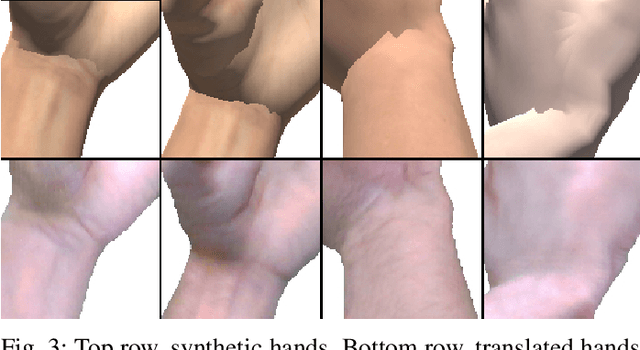
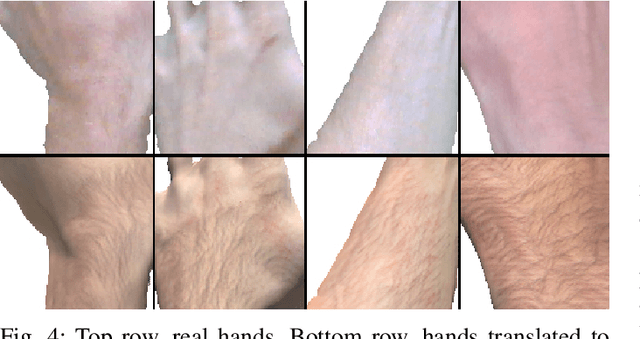
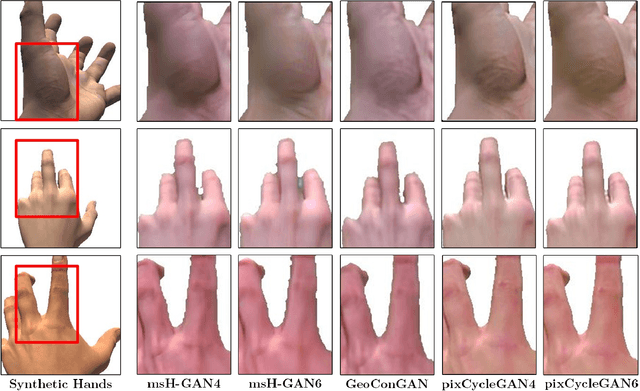
Abstract:We present HandGAN (H-GAN), a cycle-consistent adversarial learning approach implementing multi-scale perceptual discriminators. It is designed to translate synthetic images of hands to the real domain. Synthetic hands provide complete ground-truth annotations, yet they are not representative of the target distribution of real-world data. We strive to provide the perfect blend of a realistic hand appearance with synthetic annotations. Relying on image-to-image translation, we improve the appearance of synthetic hands to approximate the statistical distribution underlying a collection of real images of hands. H-GAN tackles not only the cross-domain tone mapping but also structural differences in localized areas such as shading discontinuities. Results are evaluated on a qualitative and quantitative basis improving previous works. Furthermore, we relied on the hand classification task to claim our generated hands are statistically similar to the real domain of hands.
ReActNet: Temporal Localization of Repetitive Activities in Real-World Videos
Oct 14, 2019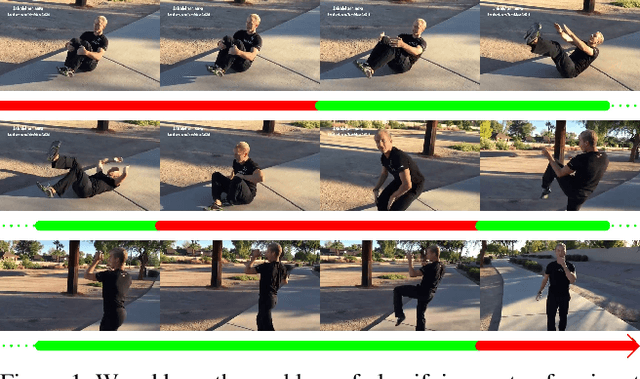

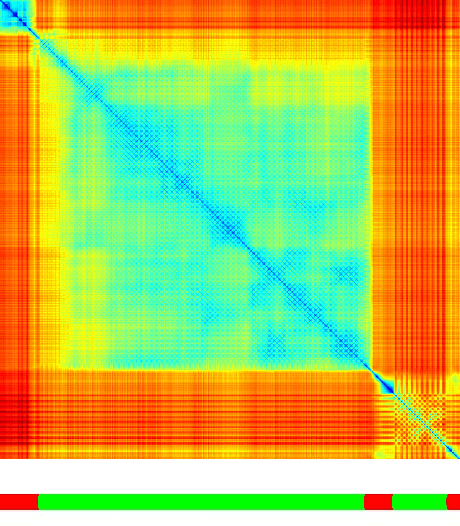

Abstract:We address the problem of temporal localization of repetitive activities in a video, i.e., the problem of identifying all segments of a video that contain some sort of repetitive or periodic motion. To do so, the proposed method represents a video by the matrix of pairwise frame distances. These distances are computed on frame representations obtained with a convolutional neural network. On top of this representation, we design, implement and evaluate ReActNet, a lightweight convolutional neural network that classifies a given frame as belonging (or not) to a repetitive video segment. An important property of the employed representation is that it can handle repetitive segments of arbitrary number and duration. Furthermore, the proposed training process requires a relatively small number of annotated videos. Our method raises several of the limiting assumptions of existing approaches regarding the contents of the video and the types of the observed repetitive activities. Experimental results on recent, publicly available datasets validate our design choices, verify the generalization potential of ReActNet and demonstrate its superior performance in comparison to the current state of the art.
 Add to Chrome
Add to Chrome Add to Firefox
Add to Firefox Add to Edge
Add to Edge